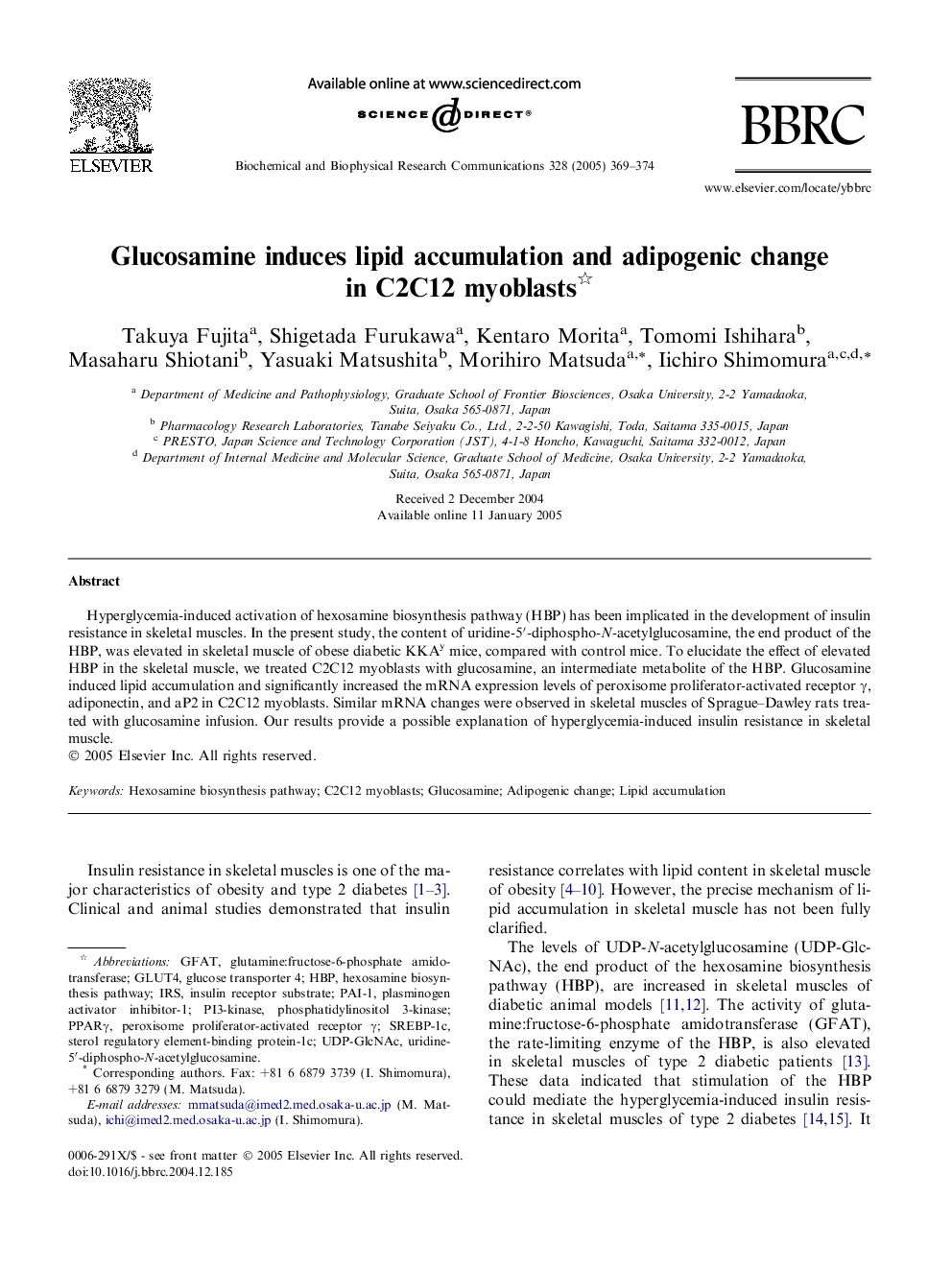| Article ID | Journal | Published Year | Pages | File Type |
|---|---|---|---|---|
| 10771142 | Biochemical and Biophysical Research Communications | 2005 | 6 Pages |
Abstract
Hyperglycemia-induced activation of hexosamine biosynthesis pathway (HBP) has been implicated in the development of insulin resistance in skeletal muscles. In the present study, the content of uridine-5â²-diphospho-N-acetylglucosamine, the end product of the HBP, was elevated in skeletal muscle of obese diabetic KKAy mice, compared with control mice. To elucidate the effect of elevated HBP in the skeletal muscle, we treated C2C12 myoblasts with glucosamine, an intermediate metabolite of the HBP. Glucosamine induced lipid accumulation and significantly increased the mRNA expression levels of peroxisome proliferator-activated receptor γ, adiponectin, and aP2 in C2C12 myoblasts. Similar mRNA changes were observed in skeletal muscles of Sprague-Dawley rats treated with glucosamine infusion. Our results provide a possible explanation of hyperglycemia-induced insulin resistance in skeletal muscle.
Related Topics
Life Sciences
Biochemistry, Genetics and Molecular Biology
Biochemistry
Authors
Takuya Fujita, Shigetada Furukawa, Kentaro Morita, Tomomi Ishihara, Masaharu Shiotani, Yasuaki Matsushita, Morihiro Matsuda, Iichiro Shimomura,
